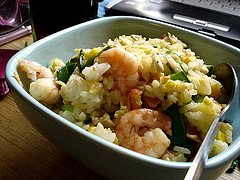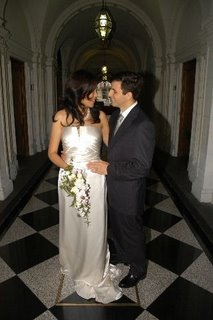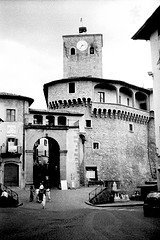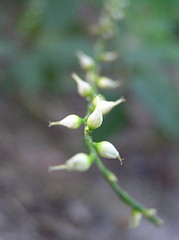Leftovers, anyone?
 Since the beginning of this week, things have started going south...not only do I spend almost twelve hours a day in shut eye mode, the otherwise sociable hours of dinner is shipwreck time, it is precisely when I feel my most queasy.
Since the beginning of this week, things have started going south...not only do I spend almost twelve hours a day in shut eye mode, the otherwise sociable hours of dinner is shipwreck time, it is precisely when I feel my most queasy.Due to this inconvenience at meal time, I try to eat a healthy breakfast of cereals, flaxseeds, black sesames and unsweetened yoghurt. Lunch used to be a bowl of soup or a quick pasta, but it has since become the main meal of the day. For example, yesterday, we had chicken cooked in my mother's fool-proof Tung Bo sauce and sautéed broccoli with garlic and ginger to go with steamed rice.
The concept of plain steamed rice, actually cooked in a rice-cooker, took Guillermo some time to get used to. He, like so many non-Chinese all over the world who have been brought up to think "chop suey" and "special fried rice" were decent Chinese food, was puzzled that my family and Chinese friends frown on ordering fried rice to go with main dishes at restaurants.
The only times Chinese order fried rice at a restaurant, usually cooked with chicken or prawns to increase the worthiness of this essentially peasant dish in a commercial setting, is to wrap a dim sum lunch or at the end of a banquet when rice and noodles are served. We wouldn't dream of serving it up to our guests at home either. Fried rice is considered a "leftover" dish, only to be shared among family members.
The rice used for this dish has got to be cooked rice which has dried up a little, preferably overnight; hence, most people use steamed rice left over from their previous meal. The day after we have had a proper Chinese meal accompanied by steamed rice, at home, Guillermo and I have fried rice for lunch. I often stir fry ours with an egg, slivers of chicken and Chinese chives.
Chinese chives and eggs can be used together to make "egg triangles", dainty omelettes shaped in their namesake. Our god-send of a masseuse, Diana, is coming to check on me today, bringing with her organic eggs straight from a farm. She promised that the yolks are like the "i rossi" (the reds) of Italian eggs. I am looking forward to making omelettes, Chinese steamed egg custard with ginger juice and various other dishes which would showcase the wholesome goodness of these eggs.
Speaking of fresh organic eggs, we have discovered a pigeon's egg in a flower box on one of our French balconies. I had meant to clear the dried up lavender and plant some spring flowers there, but with this discovery, I have to postpone my plan until the egg is hatched. When I pointed the egg to Guillermo, he excitedly asked me if we could eat it! I almost screamed in horror, it is incredulous..."Darling, you're more Chinese than any of us!"
My mother's Tung Bo sauce is normally used for braising pork belly, the famous Jiangsu dish of Tung Bo Meat. Since the sauce is saved for repeat cooking, I use it for chicken pieces sometimes.
My mother's Tung Bo sauce:
1 cup Shaoxing wine
2 cups Chinese black vinegar
3 cups unrefined sugar
4 cups dark soy
5 cups water
Tung Bo Meat:
2kg slab of pork belly
Seal the pork belly on a hot pan. This prevents the meat from shrinking upon prolong cooking.
Put all the ingredients for the sauce in a deep pot. Bring it to boil and then lower the piece of meat in the sauce. When the sauce is back to boiling point, turn down the heat. Let the meat braise until a knife goes through like stabbing into butter.




























